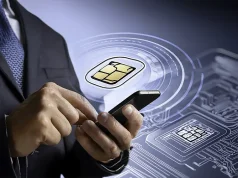
I’ve traveled to over forty countries, and staying connected used to be a constant headache. Hotel Wi-Fi was unreliable, often requiring passwords that changed daily or simply didn’t work in my room. Roaming charges were brutal, sometimes costing more than my flight. International data packages from home carriers offered terrible value and spotty coverage.
Buying local SIM cards at airports seemed smart initially. Some worked well in major cities but died completely in rural areas. Others required complicated setup processes that failed when I needed them most. I lost count of airport queues where I struggled with language barriers and incompatible phone settings. Even when they worked, I’d lose the tiny cards in hotel safes or forget to switch them when crossing borders.
The Evolution from Physical to Digital Frustration
International SIM cards felt like progress, but they brought new problems. I’d research providers before each trip, buy one for Europe, another for Asia, and still face dead zones or painfully slow speeds. The physical cards were easy to lose, and swapping them meant powering down my phone at every border crossing, missing calls and messages during transitions.
First-generation eSIMs looked promising when they appeared. Digital installation meant no more tiny cards to fumble with or lose in wallet compartments. But reality proved frustrating in practice. Each destination still needed a separate eSIM plan and profile. During a recent trip through Italy, France, and Spain, I bought three different plans and constantly switched between them. Managing multiple profiles felt like playing digital Tetris with my phone’s settings.
The process was particularly annoying when moving between countries quickly. A day trip from Nice to Monaco meant switching profiles twice. Weekend travel from Singapore to Malaysia required yet another profile change. The technology promised simplicity but delivered complexity in a different form.
The Breakthrough: Second-Generation Travel eSIM Solutions
Everything changed when I discovered newer travel eSIM technology that promised universal coverage. After testing several providers during trips to Southeast Asia and South America, Truely actually delivered what others only promised.
The difference became obvious during a three-week journey covering Japan, Thailand, and Australia. Instead of buying three separate plans and juggling multiple profiles, one eSIM worked seamlessly across all destinations. Installation took literally one click. No complex setup procedures, no multiple profiles to manage, no switching between networks when crossing borders.
Real-World Performance Without Compromise
The unlimited data eSIM approach actually works in practice. I can upload high-resolution photos from Kyoto temples, conduct lengthy video calls from Phuket beaches, and stream content without worrying about hitting caps or facing surprise charges. The connection quality has been consistently reliable across different countries and varying network conditions.
The pause and resume functionality proved invaluable when my Bangkok business trip extended by four unexpected days. Instead of paying for unused service or scrambling for local alternatives, I simply paused the plan and resumed when ready to continue traveling. This kind of flexibility matters when real-world travel rarely follows rigid schedules.
Beyond Basic Connectivity
What sets modern eSIM technology apart is how it handles the complexities of international travel that other solutions ignore. Time zone changes used to mean missed calls and delayed messages as my phone struggled to connect to new networks. Now, switching between countries is completely seamless. My phone automatically connects to the strongest available network without any intervention from me.
The technology also eliminates those awkward moments when you need to provide a local phone number for restaurant reservations or hotel check-ins. Your phone maintains the same number and connectivity regardless of location, making travel logistics significantly smoother. No more explaining to confused restaurant staff why your phone number doesn’t match your current location.
Security and Peace of Mind
Modern eSIM technology addresses security concerns that luxury travelers face daily. Unlike public Wi-Fi networks in airports and hotels, or questionable local networks, eSIM connections provide encrypted, secure access for sensitive communications and financial transactions that often accompany high-end travel.
The biggest change is complete peace of mind. No hunting for airport SIM vendors. No surprise bills appearing weeks later. No dead zones in supposedly covered areas. Whether I’m coordinating private transfers in rural Tasmania or sharing dinner photos from an exclusive Tokyo restaurant, connectivity simply works.
Why This Revolution Matters for Premium Travel
Luxury travel means expecting seamless experiences at every touchpoint. When you invest significantly in extraordinary journeys, connectivity shouldn’t be an afterthought or source of stress. You want to capture moments, share them instantly, and stay reachable without technical interruptions disrupting your carefully planned experiences.
The reliability factor becomes especially crucial during complex travel itineraries. Last year, I coordinated a surprise birthday celebration across three different time zones while traveling through Europe. The seamless connectivity allowed me to manage vendors, communicate with family members, and handle last-minute changes without missing a beat or experiencing connection anxiety.
For business travelers who blend work with luxury experiences, this consistent connectivity proves invaluable. Video conferences from scenic locations, accessing secure company networks, and maintaining productivity while traveling all become effortless when your connection is genuinely dependable.
The Cost Factor That Changes Everything
Traditional connectivity solutions hit your wallet hard in unexpected ways. Beyond obvious roaming charges, there are hidden costs like activation fees, daily access charges, and premium rates for data overages. I once received a $400 roaming bill after a weekend in Switzerland, despite being careful about usage. With modern eSIM solutions, pricing becomes transparent and predictable.
The economic advantage extends beyond avoiding surprise charges. When traveling for extended periods, buying multiple country-specific plans adds up quickly. A month-long European trip could easily cost $200-300 in connectivity fees using traditional methods. Second-generation eSIM technology offers better value while delivering superior performance and convenience.
Real Traveler Experiences That Matter
The proof comes from real-world usage across diverse scenarios. During a recent African safari in Kenya, my eSIM maintained connection even in remote areas where other travelers struggled with local SIM cards that simply didn’t work. The guides were impressed when I could share wildlife photos instantly while others waited until returning to Nairobi.
Island hopping in Greece presented another test. Moving between Santorini, Mykonos, and Crete used to mean connection headaches as networks varied wildly between islands. Now, seamless connectivity means I can book last-minute ferry changes, find secluded restaurants, and stay connected with travel companions without missing a beat.
After years of testing different solutions and dealing with connectivity disappointments, second-generation eSIM technology finally delivers the reliable, simple connectivity that matches how we actually travel today. No backup plans needed. Just global coverage that works seamlessly, wherever your journey takes you.





